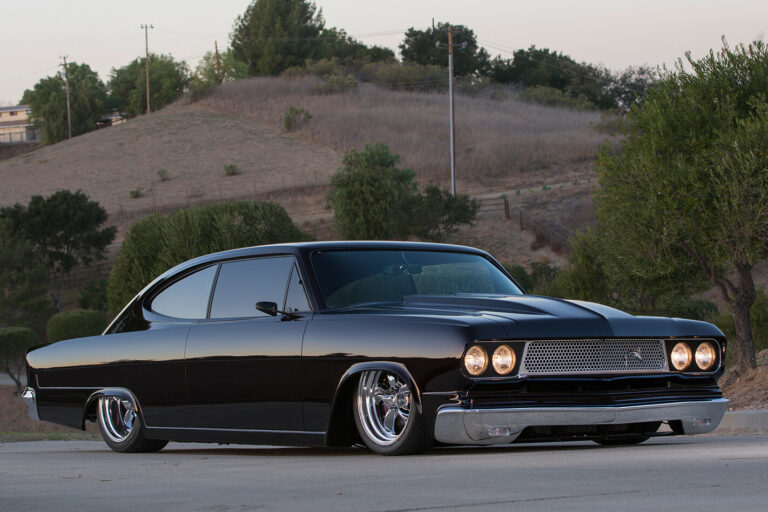The famous French firm often proud to not follow the herd with its customers - somewhat irony - follow the suit in their draw. On one side, DS and SM, almost all products can be classified as unconventional, in which a little 'tin snail' is no exception. If you feel that the production car looks a bit strange, then its shovel's nose, cyclops prototype may reach you a pair of deep glasses. However, there is no denying that Citroën 2CV has certainly done things in its own way - and it has since been widely loved to do so.
1959 Chevrolet El Camino

This entry can easily apply to the precursor pick-up salon mash-up Ford Ranchhero, however, just have something-and feel free to disagree with us here-a little cooler about a Chevrolet L Camino. Among our collective psychologists who have pick-ups of muscle pick-ups are the 1960s caminos, with good reasons.
The first L Camino, however, came less than a decade ago, its spacious wings and rear rear windscreen, which was definitely a challenging design even in the late 1950s.
1959 Daimler SP250
The V8 engine was considered important for the success of the statuside, so Edward Turner's new 2.5-liter motor was a good match. The new Daimler was built on a Triumph TR3-based chassis, yet early cars were suffering from its original firm's game inexperience, which was much more flexing than desirable.
With its challenging designs and until the old -fashioned rear wings, SP250 did not really have much impact. Many of the 2654 examples returned to the UK, due to a recession in the US, which matched with the launch of SP250, unsold.
Read more :- Mercedes-Benz S-Class Maestro Edition Launched At Rs 151 Crore
1961 Amphicar
ts hull-like body design and off-road look ride height does not make it an all-time easy-on-the-eye classic car, however, once it is in water (and most of it is unclear), the design becomes very harmonious. Able at the road, capable of hitting about 70mph and 7Mph (6 knots) on water, was powered by a reverse-mounted 1200 Triumph Herald Engine.
Emfikar is notable for being the only massively produced citizen Amphibius vehicle. There is also a good reason for this. Only 3878 was produced from 1961–'65, with the majority (3046) going to American customers. It seems that most people prefer to use a boat.
1965 AMC Rambler Marlin

For some reason, AMC Ramlin (later just Marlin), receives a lot of hatred for its look, although we think a lot is liked. While its performance rarely lived up to its smooth silhouette-327cu in the V8 engine was designed to fill a niche for the owners who wanted a sexy two-door, with a little more space.
Marlin's exaggerated fastback design has been held responsible for the AMC in-house design team, led by Dick Tigs-who became the VP of AMC design and oversee other controversial cars in the form of pacer and gramlin.
1965 Lancia Fulvia Sport Zagato
Traditionally very beautiful Lennsia Phulwia host fans. It’s more angular and acute Phulwia Sport cousins, however, are not universally well received. Its blurred and slightly puffed ends are not helped by squad-off headlights and large chrome grille; Nevertheless, the master rear and profile are more than makeup for this.
The Zagato style of the game apparently jumped from the pen of the great Ercole Spada. Despite this genealogy, Little Lennsia Phulwia Sport Zagato is least desirable for all famous Italian design house efforts.
1966 Lotus Europa
Already four years ago, after a revolution in the small sports-car market with a game-changing original Lotus Ellen, Colin Chapman decided that it was about time when he brought the middle-composed layout to the public. His car (therefore name) for Europe was developed in a tornado over a period of 18 months using the Renault 16 Mechanical Bits.
This kept the cost low and, when combined with Chapman's trademark featherweight design, made Lotus Europa the car of an extraordinary driver, especially for people under 6 feet. Style is definitely specific, even given the barriers of the middle-complicated layout.
1969 Porsche 914
With highly unconventional lines and quality of construction, which was good, if not on the summer with Porsche - coachbuilder Karman was contracted to make 914 - it naturally offers excellent handling characteristics, if you can achieve its unconventional look.
Both VW and Porsche benefited from the model that was completely different in concept and execution, one of the established boundaries of its ancestors. The best Porsche 914 was powered by a six-cylinder engine, although everyone handled it brilliantly, even though they looked a bit different for some people.
1975 Triumph TR7
The Triumph TR7 was a very fuel-skeep sports car, the first to appeal to the market's largest market, USA. This meant that the convertable version was later-due to increasing the roll-over security concerns-and the 'complex' independent rear suspension and mid-engine layouts of European competitors were out.
What we got was a basic, frugal (Ish), a four-cylinder sports car, a dynamic all-rounder, with a more forgiving ride than some of his rivals. British Leyland tried to improve cases with Sprint and V8 versions, but it was very low, it was too late.




